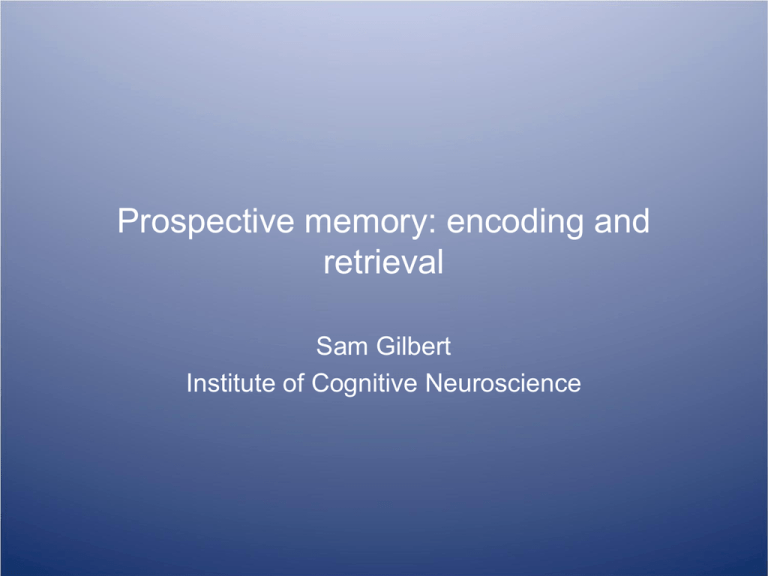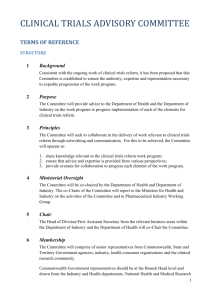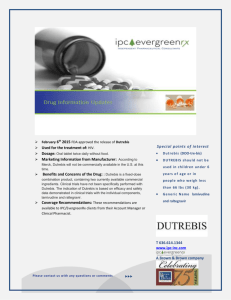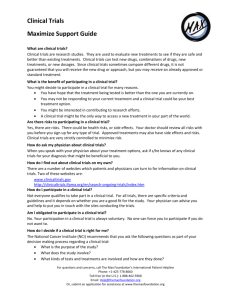Prospective memory: encoding and retrieval
advertisement

Prospective memory: encoding and retrieval Sam Gilbert Institute of Cognitive Neuroscience Background • Prospective memory (PM) refers to our ability to encode intentions for future behaviour, then act on those intentions at the appropriate time • Several recent fMRI studies have investigated brain mechanisms supporting this ability (Benoit et al., in prep; Burgess et al., 2001, 2003; Gilbert et al., in press; Okuda et al., 1998, 2007; Reynolds et al., in press; Simons et al., 2006) • These studies have all investigated retrieval of delayed intentions. The present study will look at encoding as well Previous studies • Typically, participants are engaged in an “ongoing task”, e.g. making a button-press response to a series of words to indicate whether they have 4 or 6 letters • PM conditions: continue performing the ongoing task, but press a different button if you see an animal word PM > ongoing only ongoing only > PM Burgess et al., 2001 Burgess et al., 2003 Design Ongoing task: 2-back SONG PM encode REST SONG yes PM store (1 – 5 trials) WEAR no REST no WEAR SWIM CASE NOTE SWIM PM retrieve: press different key yes no Control: PM encode no no no Control: PM store (1 – 5 trials) Control: PM retrieve Analyses • PM storage trials versus control: expect signal change in BA 10 • PM encoding versus control: same regions as involved in retrieval? • Subsequent prospective memory effect: encoding-related activity that distinguishes subsequent hits from misses? • Each PM cue will appear twice in the experiment. Half of blocks use words, half pictures. Multi-voxel pattern analysis to find out whether the intention can be decoded from storage trials (specific intention / word versus picture) Methods • Standard EPI imaging parameters: 3mm x 3mm x 3mm voxels, 33 slices, TR=2.5s • 3s per trial; 7 trials per ‘miniblock’ (i.e. PM or control), total: 48 PM, 48 control trials • 6 runs of approx 6 minutes + 6 minute structural scan: total scanner time = 42 mins • Analysis in SPM5











